Fulfilling our mission to protect and restore the Morro Bay estuary for people and animals requires a lot of hard work in the field. At the Estuary Program, that often means spending time doing research and monitoring work out on the water. Read on to see what we’ve been up to during the past month.
Data and reporting
July was a quiet month for fieldwork. This has given the monitoring staff time to get caught up on data entry and report writing. Keep an eye out for a series of reports related to the health of the estuary and watershed that will come out later this year. In the meantime, you can check out our library to see past reports.
Eelgrass monitoring and mollusk sightings
We did get out to help Cal Poly monitor eelgrass in Morro Bay. While we were out, we spotted a few different types of mollusks.
We often see Navanax inermis, commonly referred to as just navanax.
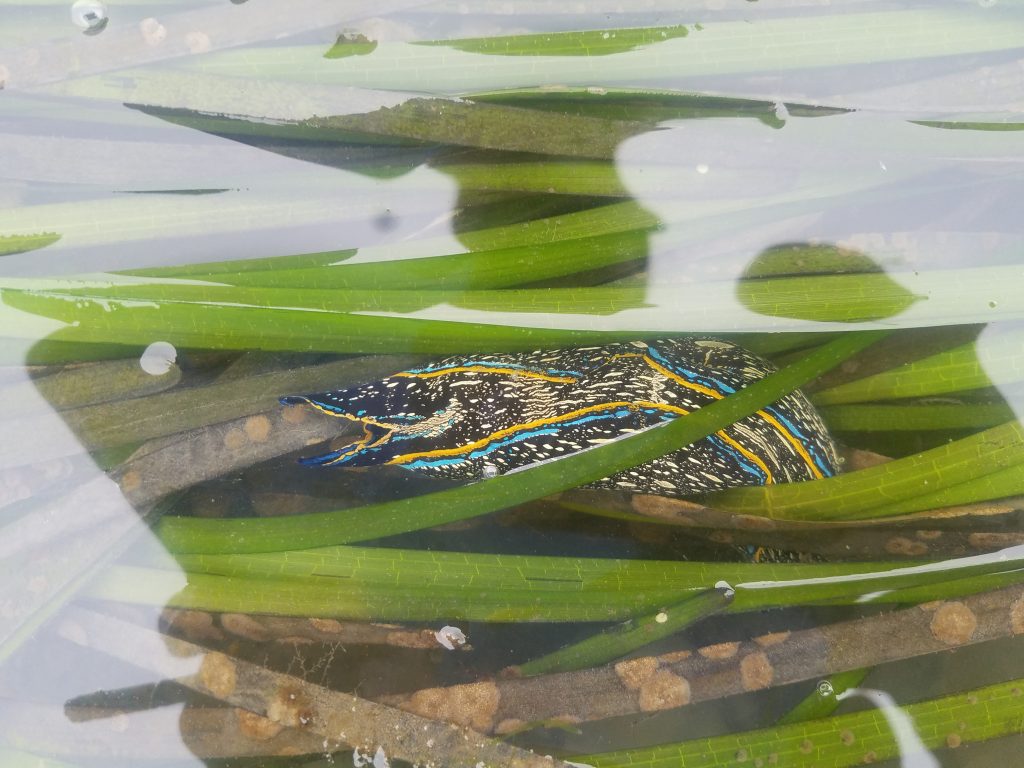
We also saw a number of green slugs camouflaged on blades of eelgrass.
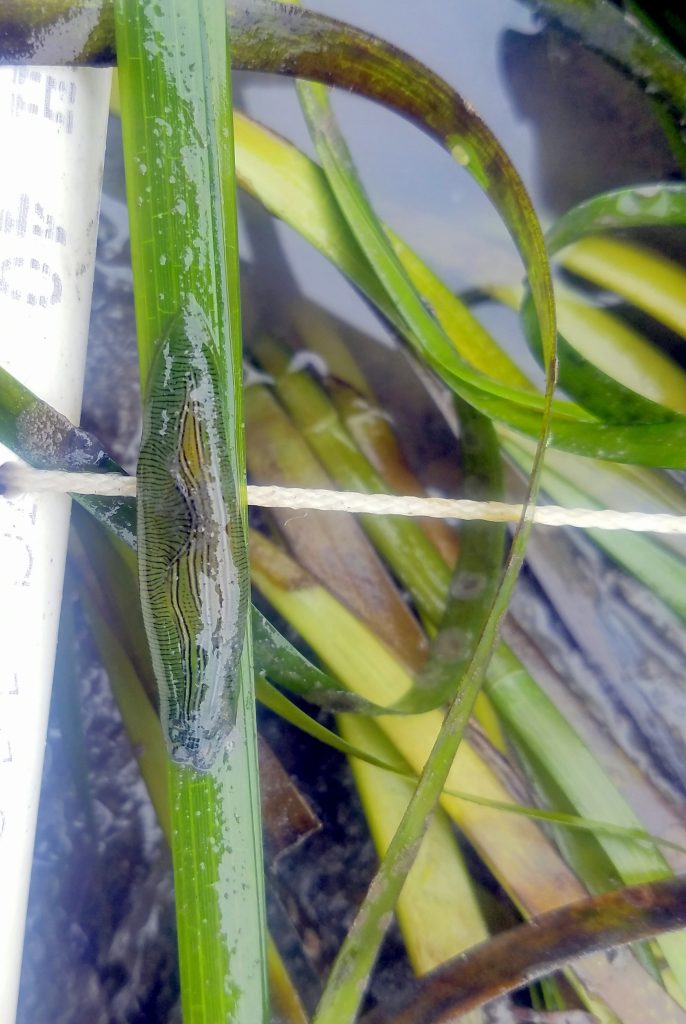
This little slug lives on eelgrass and eats organisms growing on the blades. The scientific name for this green slug is Phyllaplysia taylori. We’ve heard a few common names for it, including the eelgrass sea hare or the eelgrass slug. If you break it down, the scientific name is similar. “Phyll-” comes from Greek and refers to leaves or leaf structures, and “Aplysia” is a genus, or category, of sea slug.
Scientific names like Phyllaplysia taylori, come from the system of biological classification called taxonomy. In this system, scientists place organisms in different categories based on their characteristics. The diagram below shows where the red fox falls in each taxonomic category.
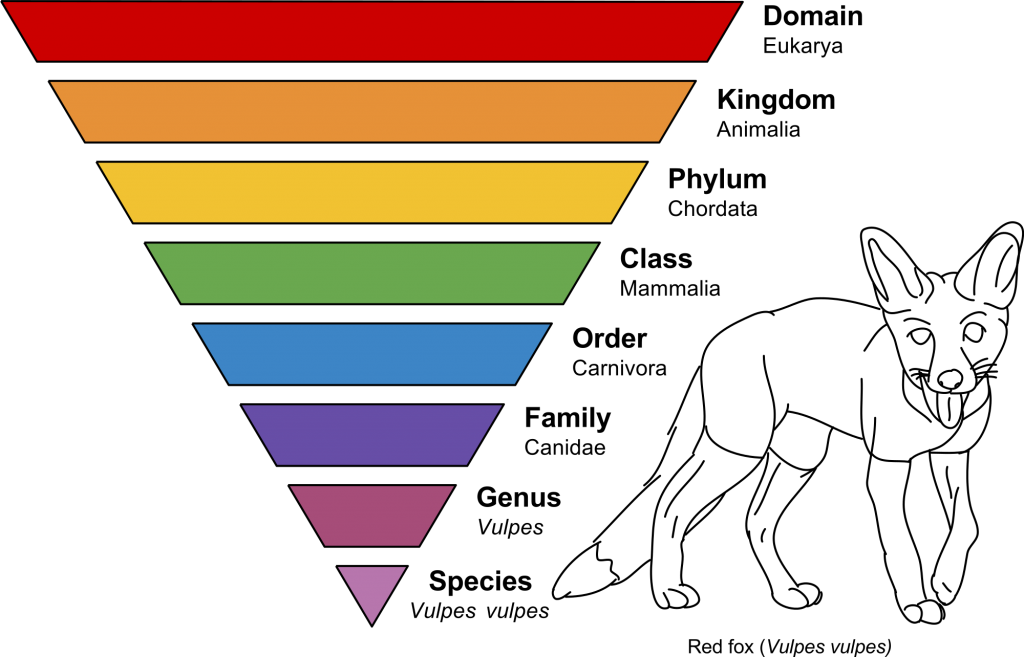
Taxonomic fun fact: People often use the term “nudibranch” to refer to all sea slugs. Nudibranch actually refers to animals that fall within a specific order, Nudibranchia. Neither the navanax nor the eelgrass slug are nudibranchs, because they fall into a different order, Anaspidea. We do see nudibranchs in Morro Bay though, such as this one, a Hermissenda crassicornis
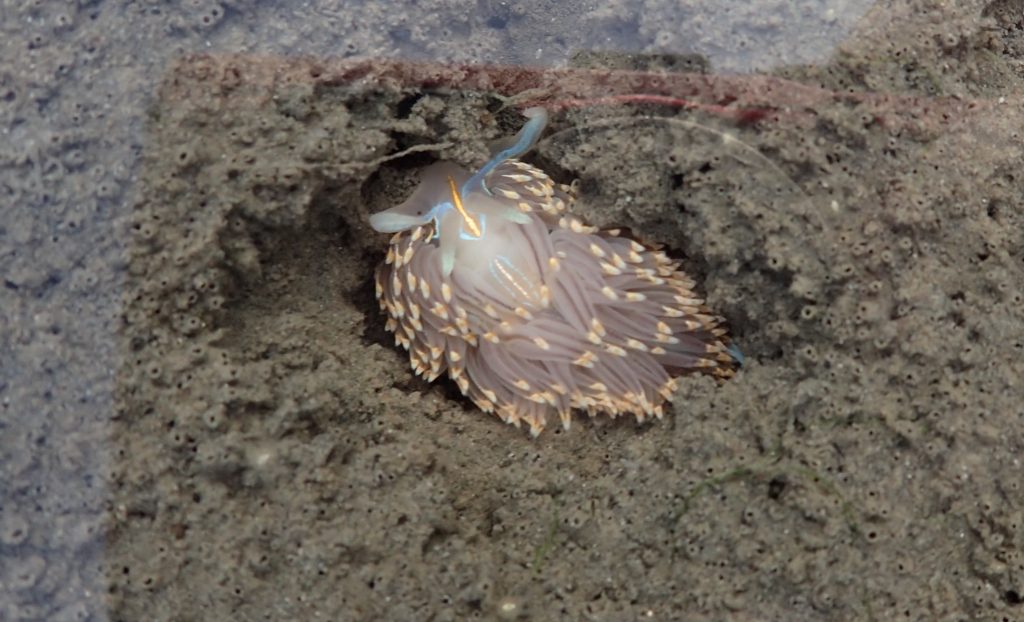
Water quality and fish in Pennington Creek
While out doing some routine water quality monitoring, Karissa saw a school of fish swimming around in this pool on Pennington Creek. Pennington Creek has some of the best habitat for steelhead trout in our watershed.
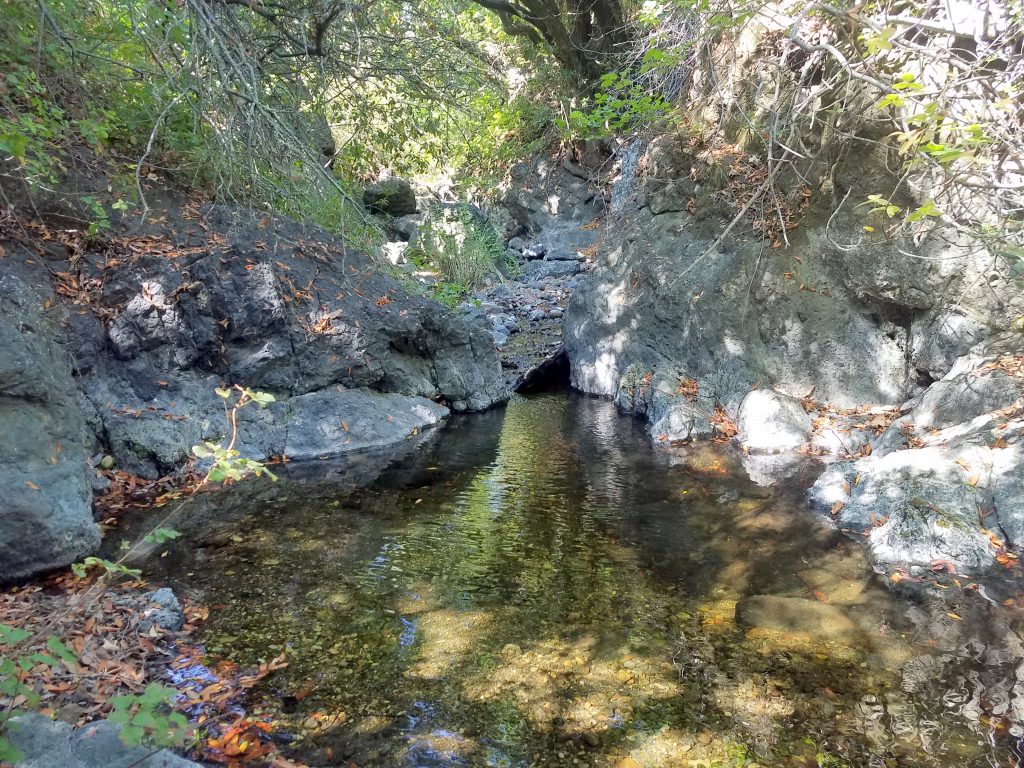
Subscribe to our weekly blog to have a an Estuary Program post delivered to your inbox every week.
Help protect and restore the Morro Bay estuary
- Donate to the Estuary Program today and support our work in the field, the lab, and beyond.
The Estuary Program is a 501(c)3 nonprofit. We depend on funding from grants and generous donors to continue our work. - Support us by purchasing estuary-themed gear from ESTERO. This locally owned and operated company donates 20% of proceeds from its Estuary clothing line and 100% of Estuary decal proceeds to the Estuary Program. Thank you, ESTERO!
- Purchase items from the the Estuary Program’s store on Zazzle. Zazzle prints and ships your items, and the Estuary Program receives 10% of the proceeds. Choose from mugs, hats, t-shirts, and even fanny packs (they’re back!) with our fun Estuary Octopus design, our classic Estuary Program logo, or our Mutts for the Bay logo.
Thank you for your support!